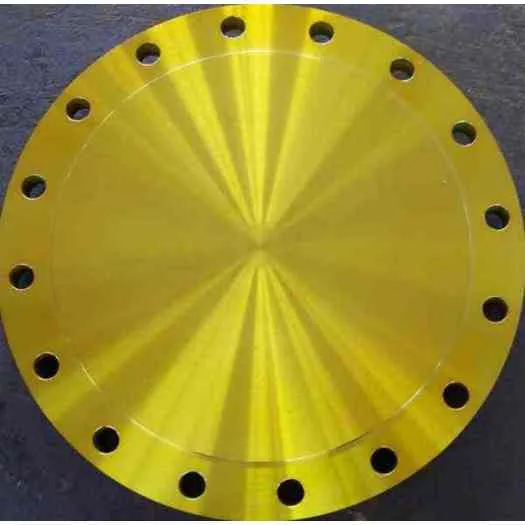-
Cangzhou Yulong Steel Co., Ltd.
-
Phone:
+86 13303177267 -
Email:
admin@ylsteelfittings.com
- English
- Arabic
- Italian
- Spanish
- Portuguese
- German
- kazakh
- Persian
- Greek
- French
- Russian
- Polish
- Thai
- Indonesian
- Vietnamese
- Zulu
- Korean
- Uzbek
- Hindi
- Serbian
- Malay
- Ukrainian
- Gujarati
- Haitian Creole
- hausa
- hawaiian
- Hebrew
- Miao
- Hungarian
- Icelandic
- igbo
- irish
- Japanese
- Javanese
- Kannada
- Khmer
- Rwandese
- Afrikaans
- Albanian
- Amharic
- Armenian
- Azerbaijani
- Basque
- Belarusian
- Bengali
- Bosnian
- Bulgarian
- Catalan
- Cebuano
- China
- China (Taiwan)
- Corsican
- Croatian
- Czech
- Danish
- Esperanto
- Estonian
- Finnish
- Frisian
- Galician
- Georgian
- Kurdish
- Kyrgyz
- Lao
- Latin
- Latvian
- Lithuanian
- Luxembourgish
- Macedonian
- Malgashi
- Malayalam
- Maltese
- Maori
- Marathi
- Mongolian
- Myanmar
- Nepali
- Norwegian
- Norwegian
- Occitan
- Pashto
- Dutch
- Punjabi
- Romanian
- Samoan
- Scottish Gaelic
- Sesotho
- Shona
- Sindhi
- Sinhala
- Slovak
- Slovenian
- Somali
- Sundanese
- Swahili
- Swedish
- Tagalog
- Tajik
- Tamil
- Tatar
- Telugu
- Turkish
- Turkmen
- Urdu
- Uighur
- Welsh
- Bantu
- Yiddish
- Yoruba

Aug . 29, 2024 12:59 Back to list
High-Quality Steel Pipe Bends and Elbows for Reliable Piping Solutions
Understanding Steel Pipe Bends and Elbows Essential Components in Piping Systems
In various industrial applications, the need for efficient fluid transport systems is paramount. Steel pipes, known for their durability and strength, are frequently employed in these systems. Among the critical components of a piping system are pipe bends and elbows, which facilitate directional changes in the flow of liquids or gases. This article delves into the significance, types, manufacturing processes, and applications of steel pipe bends and elbows.
Importance of Steel Pipe Bends and Elbows
Pipe bends and elbows play a crucial role in maintaining an efficient and effective flow in piping systems. They allow for changes in direction, which can be pivotal in navigating complex layouts in confined spaces. Proper installation of bends and elbows minimizes pressure loss and turbulence, ensuring that the fluid dynamics remain balanced. Additionally, these components help in avoiding sharp corners that could lead to potential blockages or leaks.
Types of Bends and Elbows
1. Pipe Bends Steel pipe bends are designed to create gradual curves in piping systems. They are typically classified based on their radius, which can be long or short. Long radius bends (often 1.5 times the diameter of the pipe) are preferred for applications requiring minimal pressure loss. On the other hand, short radius bends (equal to the diameter of the pipe) are suitable for situations where space is limited.
2. Elbows Elbows are fittings used to change the direction of the flow quickly. They are commonly available in two angles 90 degrees and 45 degrees. In addition, elbows can be categorized into different types based on their construction—such as welded, threaded, or socket welded. The choice of elbow depends on the piping layout, fluid characteristics, and the required flow rate.
steel pipe bends and elbows

Manufacturing Processes
The manufacturing of steel pipe bends and elbows often involves processes such as bending, welding, and machining. For bends, the pipe is heated and bent using hydraulic machines that create the desired radius without compromising the integrity of the material. Elbows, conversely, are generally fabricated by cutting pipe sections and welding them into the required angle. Advanced technology and machinery ensure that these fittings adhere to strict industry standards, such as ASTM or ASME specifications, ensuring reliability and safety.
Applications
Steel pipe bends and elbows find extensive applications across various industries, including oil and gas, chemical processing, water treatment, and construction. In oil and gas pipelines, for instance, these components help in routing pipelines efficiently around obstacles while maintaining flow efficiency. In chemical plants, they are essential for managing complex piping networks that transport corrosive substances. Their versatility and reliability make them integral to numerous engineering solutions.
Conclusion
In summary, pipe bends and elbows are vital components of steel piping systems, enabling efficient fluid transportation through directional changes. Their design, manufacturing, and selection significantly impact the performance and durability of the entire piping network. As industries continue to evolve and demand innovative solutions for fluid handling, the importance of high-quality steel pipe bends and elbows will only increase, underscoring the necessity of understanding and utilizing these essential fittings. Whether in heavy industry or residential plumbing, their role remains invaluable in ensuring safe and efficient operations.
Latest news
-
ANSI 150P SS304 SO FLANGE
NewsFeb.14,2025
-
ASTM A333GR6 STEEL PIPE
NewsJan.20,2025
-
ANSI B16.5 WELDING NECK FLANGE
NewsJan.15,2026
-
ANSI B16.5 SLIP-ON FLANGE
NewsApr.19,2024
-
SABS 1123 FLANGE
NewsJan.15,2025
-
DIN86044 PLATE FLANGE
NewsApr.19,2024
-
DIN2527 BLIND FLANGE
NewsApr.12,2024
-
JIS B2311 Butt-Welding Fittings LR/SR 45°/90° /180°Seamless/Weld
NewsApr.23,2024











